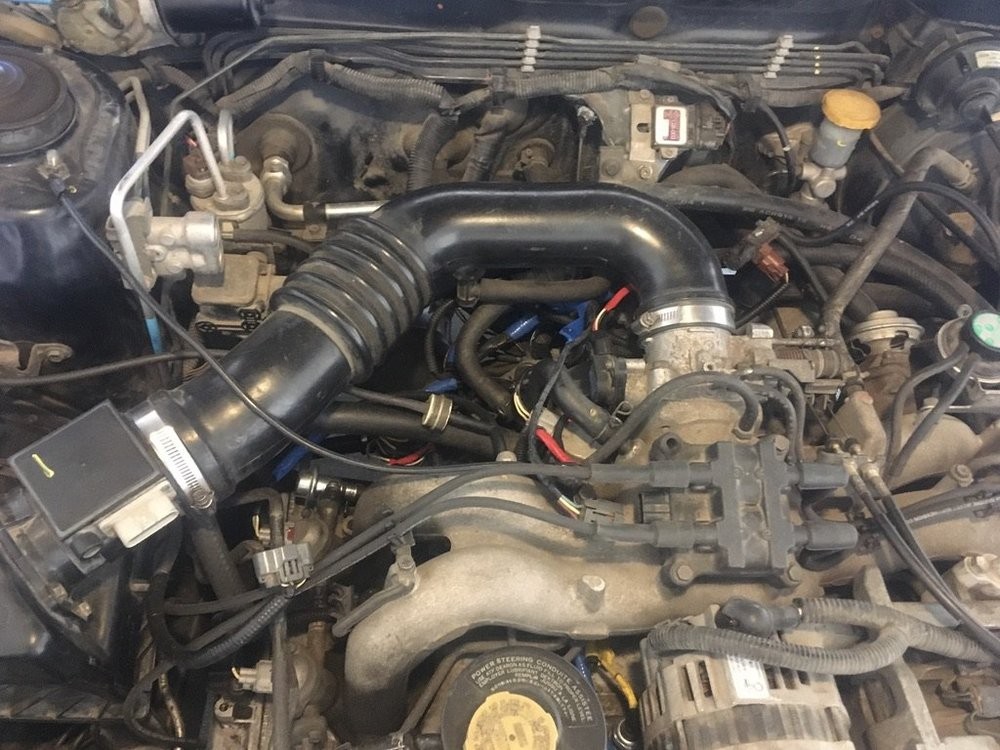Low idle issues can be frustrating, especially when they seem to surface or worsen around the time you’ve used an OBD2 scanner for diagnostics. If you’re noticing an idle drop in your Subaru Outback, particularly after connecting an OBD2 device, you’re not alone. Let’s explore potential causes and troubleshooting steps, drawing from real-world experiences to guide you.
One Subaru Outback owner described a perplexing situation with their ’98 model (EJ251 block/EJ25D heads, 5MT) experiencing a significant idle drop, almost to the point of stalling. This issue was most pronounced in hot weather and when the fuel tank was less than half full. Interestingly, using the A/C, which typically engages an idle-up function, seemed to alleviate the problem. Recent maintenance had been extensive, including new plugs, wires, timing belt kit, cam gears, and replacements of the IACV, MAF, TPS, fuel pump components, and oxygen sensor. Compression test results were within range, although oil consumption was noted.
So, why the idle drop, and could it be related to OBD2 usage, or is that just coincidental timing? While connecting an OBD2 scanner itself doesn’t directly cause an idle drop, the act of diagnosing your car often brings underlying issues to the forefront. Here are some potential culprits to investigate when facing idle drop, especially if it seems linked to diagnostic checks:
-
Vacuum Leaks: As the Subaru owner in our example suspected, vacuum leaks are a common cause of idle problems. These leaks can disrupt the air-fuel mixture, leading to a low or unstable idle. While the owner checked with propane, sometimes subtle leaks are hard to find. Re-inspect all vacuum lines meticulously, and consider a smoke test for a more definitive check.
-
Idle Air Control Valve (IACV) Issues: Although the IACV was recently cleaned and swapped, it’s crucial to ensure it’s functioning correctly. A faulty IACV can fail to regulate idle speed, especially under varying engine loads or temperatures. Double-check the IACV connections and consider testing its operation with a scan tool if possible.
-
Mass Air Flow (MAF) Sensor or Throttle Position Sensor (TPS) Problems: Similar to the IACV, even recently replaced MAF and TPS sensors can sometimes be problematic. Ensure these sensors are genuine, correctly installed, and properly connected. Incorrect readings from these sensors can severely impact idle control.
-
Fuel Delivery Issues: While the fuel pump, strainer, filter, and pressure regulator were replaced, fuel delivery problems can still manifest. Low fuel pressure, potentially due to a failing new pump or a clogged fuel filter, could contribute to idle drop, especially when the fuel tank is low, as mentioned by the Outback owner.
-
Oxygen Sensor or Rich Fuel Condition: A new oxygen sensor was installed, which is good, but the reported rich exhaust smell at startup is noteworthy. A consistently rich fuel mixture can lead to various engine performance issues, including idle instability. Investigate potential causes of a rich condition, such as faulty injectors or issues with the engine coolant temperature sensor.
-
Engine Mechanical Condition: The compression test results were decent, but the oil consumption and valve noise mentioned hint at potential internal engine wear. While not directly causing idle drop after OBD2 connection, underlying engine issues can exacerbate idle problems. A leak-down test, as the owner considered, could provide more insight into cylinder sealing and valve condition.
-
Air Intake Restriction: The use of a ’96 Legacy wagon air intake raises a valid question. While seemingly similar, there’s a possibility it could be more restrictive than the original Outback intake, potentially affecting airflow and idle, particularly under higher demand conditions like hot weather. Consider reverting to the original or a known compatible air intake to eliminate this as a variable.
 Subaru Outback engine bay highlighting EJ25 engine for car maintenance guide.
Subaru Outback engine bay highlighting EJ25 engine for car maintenance guide.
Moving Forward with Diagnosis:
Start by re-examining the basics: vacuum lines, sensor connections, and fuel pressure. Consider a smoke test to definitively rule out vacuum leaks. If the rich exhaust smell persists, investigate potential causes of a rich fuel mixture. For the mid-RPM imbalance, further diagnostics might be needed to pinpoint the source, which could be related to ignition, fuel delivery, or even engine mounts.
While the timing of the idle drop with OBD2 connection might be coincidental, using a scan tool to monitor live data can be invaluable. Look at readings for MAF, TPS, IACV position, oxygen sensor voltage, fuel trims, and engine coolant temperature. These data points can offer crucial clues to the root cause of your Subaru Outback’s idle drop issue and guide you toward a solution.
